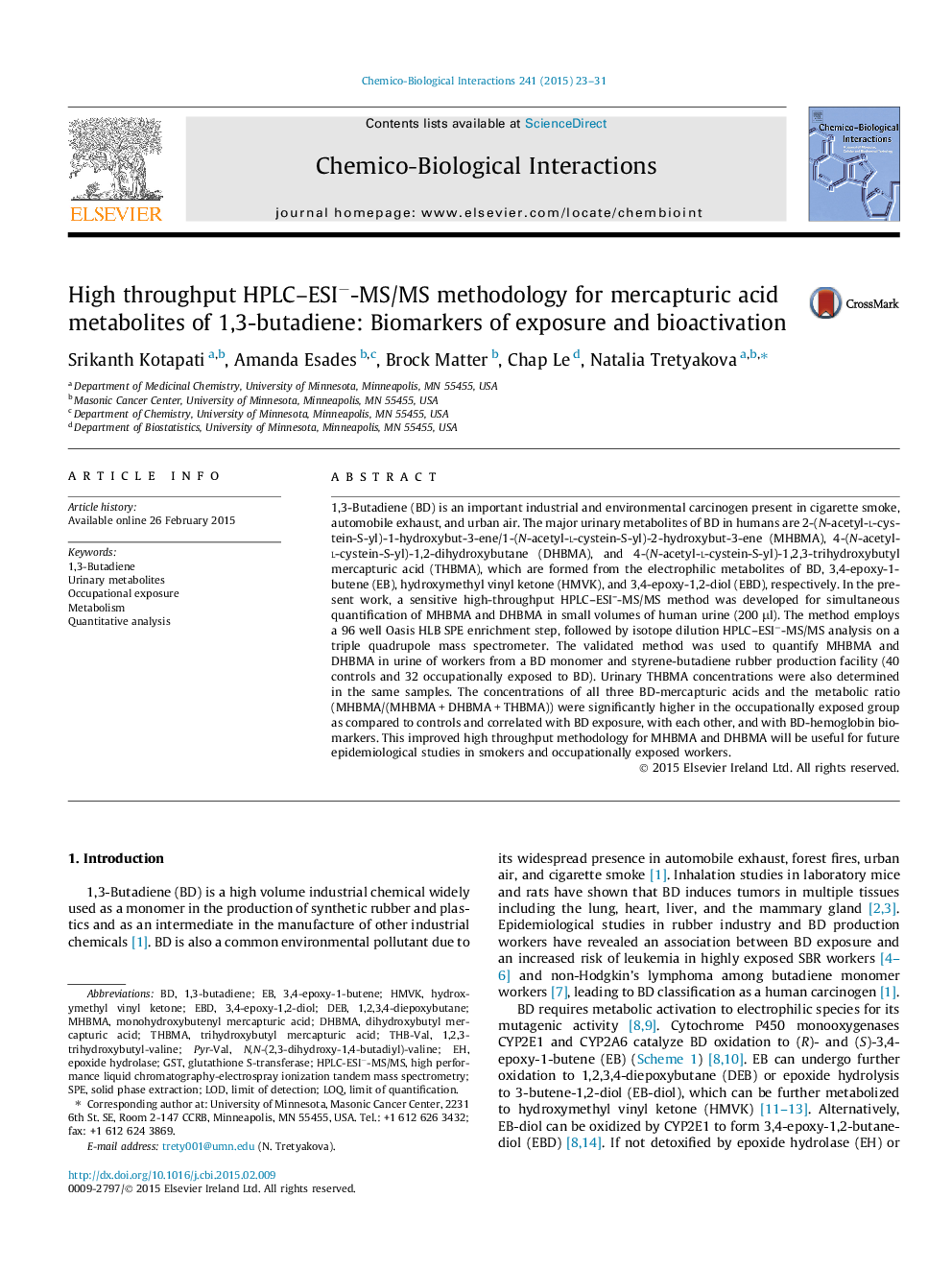| Article ID | Journal | Published Year | Pages | File Type |
|---|---|---|---|---|
| 5847729 | Chemico-Biological Interactions | 2015 | 9 Pages |
â¢New HPLC-ESIâ-MS/MS method was developed for urinary metabolites of 1,3-butadiene.â¢BD-mercapturic acids were quantified in occupationally exposed workers and controls.â¢BD-mercapturic acid levels were increased in BD exposed workers.â¢Urinary BD-mercapturic acids were associated with BD-hemoglobin adducts in blood.
1,3-Butadiene (BD) is an important industrial and environmental carcinogen present in cigarette smoke, automobile exhaust, and urban air. The major urinary metabolites of BD in humans are 2-(N-acetyl-l-cystein-S-yl)-1-hydroxybut-3-ene/1-(N-acetyl-l-cystein-S-yl)-2-hydroxybut-3-ene (MHBMA), 4-(N-acetyl-l-cystein-S-yl)-1,2-dihydroxybutane (DHBMA), and 4-(N-acetyl-l-cystein-S-yl)-1,2,3-trihydroxybutyl mercapturic acid (THBMA), which are formed from the electrophilic metabolites of BD, 3,4-epoxy-1-butene (EB), hydroxymethyl vinyl ketone (HMVK), and 3,4-epoxy-1,2-diol (EBD), respectively. In the present work, a sensitive high-throughput HPLC-ESI--MS/MS method was developed for simultaneous quantification of MHBMA and DHBMA in small volumes of human urine (200 μl). The method employs a 96 well Oasis HLB SPE enrichment step, followed by isotope dilution HPLC-ESIâ-MS/MS analysis on a triple quadrupole mass spectrometer. The validated method was used to quantify MHBMA and DHBMA in urine of workers from a BD monomer and styrene-butadiene rubber production facility (40 controls and 32 occupationally exposed to BD). Urinary THBMA concentrations were also determined in the same samples. The concentrations of all three BD-mercapturic acids and the metabolic ratio (MHBMA/(MHBMA + DHBMA + THBMA)) were significantly higher in the occupationally exposed group as compared to controls and correlated with BD exposure, with each other, and with BD-hemoglobin biomarkers. This improved high throughput methodology for MHBMA and DHBMA will be useful for future epidemiological studies in smokers and occupationally exposed workers.
Graphical abstractDownload full-size image
